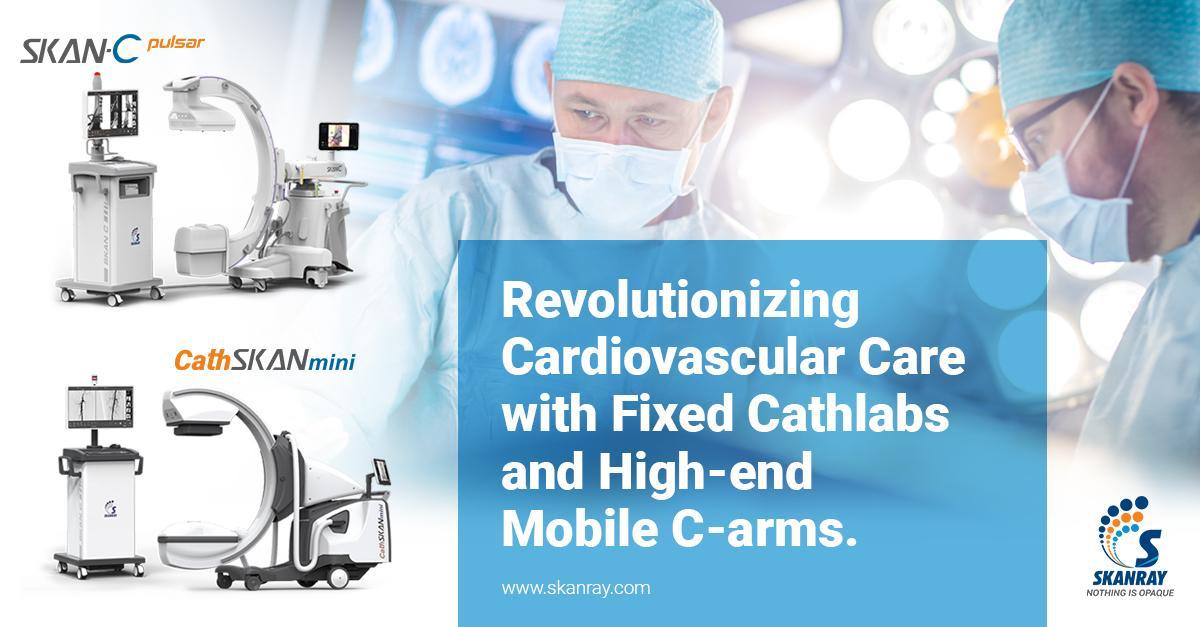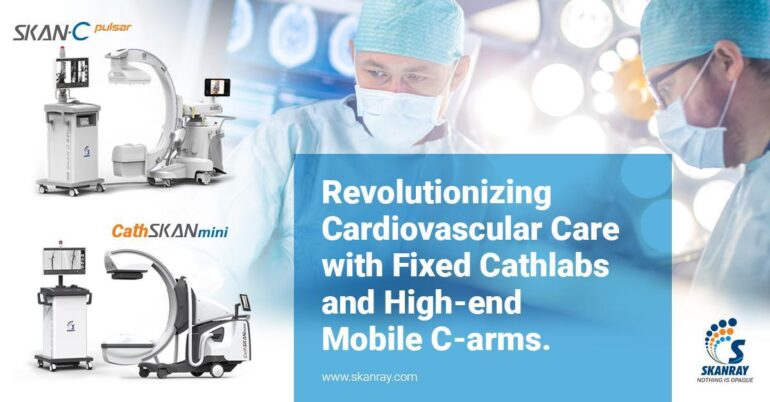Revolutionizing Cardiovascular Care with Fixed Cath Labs and High-end Mobile C-arms
- Blogs
- Posted on
-
by scanrayadmin
- 0 comments

Blogs
Home/ Blogs
Revolutionizing Cardiovascular Care with Fixed Cath Labs and High-end Mobile C-arms

In the rapidly evolving landscape of medical technology, catheterization laboratories (cath labs) have emerged as indispensable in the management of cardiovascular diseases. With advanced C-arm imaging systems, these labs are empowering physicians to diagnose and treat complex conditions effectively. Whether through fixed installations or mobile setups, cath labs are transforming patient care, offering specialized solutions for diverse procedural needs.
Understanding Fixed Cath Labs: The Pinnacle of Precision
Fixed cath labs are permanent installations that provide unparalleled imaging stability for complex and lengthy procedures. With advanced ceiling-mounted or floor-mounted C-arms, these labs deliver high-quality imaging, essential for critical interventions like cardiac and neurological procedures. Integrated with other hospital systems, fixed cath labs streamline workflows, enabling fast, accurate diagnostics and treatments.
These labs are equipped with robust X-ray tubes and fast detectors, offering sharp image definitions even for dynamic anatomy. Their high-volume capability makes them ideal for dedicated, high-traffic healthcare centers. However, the significant capital investment they require is often justified by their long-term benefits in providing cutting-edge care.
High-end Mobile C-arms: The Future of Flexible Healthcare
Mobile cath labs, on the other hand, leverage portability and adaptability, addressing the needs of facilities constrained by budget or space. These systems are equipped with lightweight, compact designs, making them easy to transport and install in various hospital locations. Despite their mobility, they incorporate advanced imaging capabilities, bridging the gap between portability and performance.
With advancements in AI-enabled imaging and multimodality integration, mobile cath labs can now support procedures previously reserved for their fixed counterparts. Their ability to operate without dedicated spaces allows hospitals to expand their services efficiently, reaching underserved populations and enhancing access to care.
Innovations Shaping the Cath Lab Landscape
The integration of emerging technologies, such as artificial intelligence (AI), augmented reality, and 3D reconstruction, is reshaping both fixed and mobile cath labs. These innovations enhance imaging precision, reduce radiation exposure, and improve procedural outcomes. For example:
- AI-driven fast collimation optimizes imaging focus in real time.
- Multimodality image registration combines inputs from FFR, IVUS, and OCT, improving decision-making.
- Augmented reality assists surgeons in hybrid operating rooms (OTs), enabling better visualization during interventions.
Choosing the Right Solution: Fixed vs. Mobile
Selecting between fixed and mobile cath labs depends on several factors, including procedural types, patient volumes, and financial considerations. Fixed cath labs cater to high-volume facilities requiring state-of-the-art infrastructure, while mobile C-arms offer cost-effective solutions for smaller or multi-location centers.
Meta Information:
Meta Title: Fixed Cath Labs and High-end Mobile C-arms: Transforming Cardiovascular Care
Meta Description: Explore how fixed cath labs and high-end mobile C-arms are revolutionizing cardiovascular care with advanced imaging technology, AI-driven innovations, and multimodality integration.
Meta Keywords: fixed cath labs, high-end mobile C-arms, cardiovascular imaging, catheterization laboratories, medical technology, AI in healthcare, multimodality integration, mobile cath labs, hybrid OTs, 3D imaging, medical imaging systems.
Keywords Used:
- Fixed cath labs
- High-end mobile C-arms
- Cardiovascular imaging
- Catheterization laboratories
- Medical technology
- AI in healthcare
- Multimodality integration
- Mobile cath labs
- Hybrid operating rooms
- 3D imaging
- Medical imaging systems

